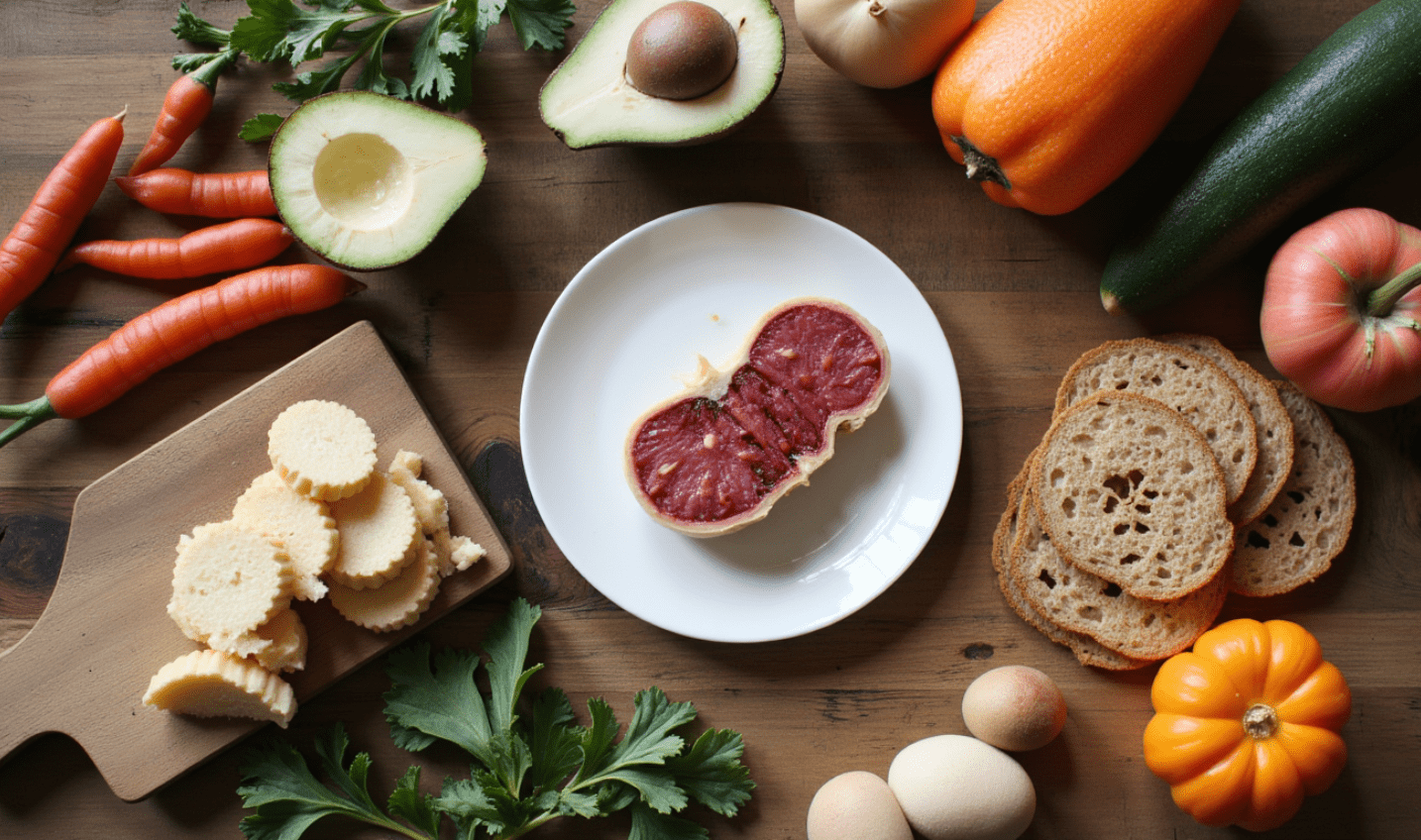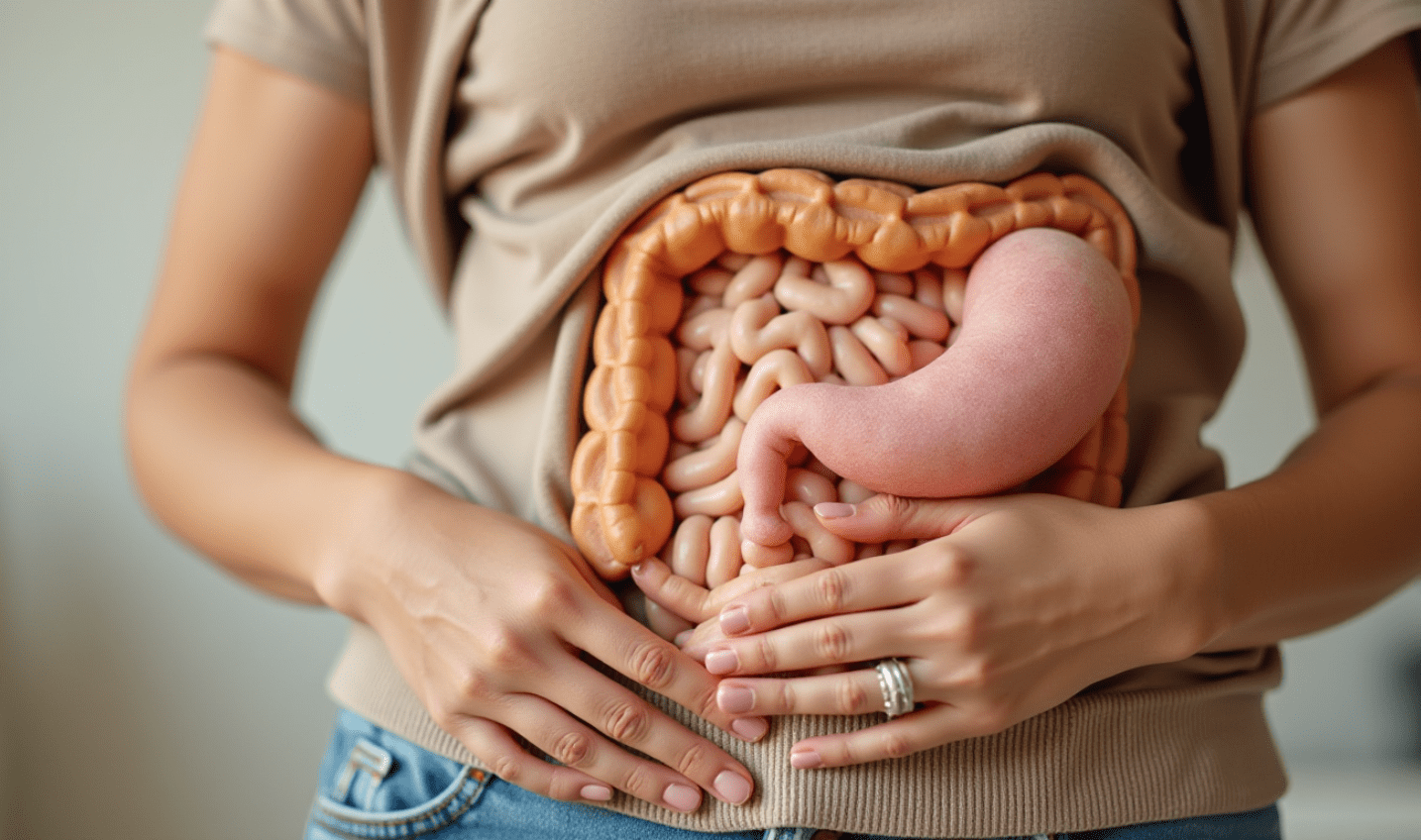Subtotal ₹0.00
feed your microbes the way you’d care for a garden—fiber and variety first, with a little fermented “compost,”
and very few chemicals that dry the soil. In 2023–2025, research has only strengthened that simple formula
for digestion, immunity, mood, and metabolic health (Study, 2024).
What I mean by “gut health,” briefly
When I say “gut health,” I’m talking about three things working together:
- Microbiome: the trillions of microbes in your intestines—mostly bacteria, plus yeasts and viruses—that help digest food, make vitamins, and train the immune system (Study, 2023).
- Barrier: the intestinal lining that keeps nutrients in and unwanted particles out; fiber, certain fats, and adequate sleep maintain this barrier (Study, 2024).
- Signals: chemical messages (like short-chain fatty acids) produced when microbes ferment fiber; they influence hunger, blood sugar, and inflammation (Study, 2023).
You do not need exotic powders. Daily, boring, delicious foods do most of the work—if you know which ones.
The 5-part daily plate I recommend
Use this as your north star. If you hit four parts most days, your gut will notice within 2–4 weeks.
- Fiber foundation (25–35 g/day): Aim for at least 8–10 grams of fiber per main meal. Mix soluble (oats, beans, chia) and insoluble (leafy greens, whole grains). Soluble fiber feeds good bacteria and forms a soothing gel; insoluble adds bulk and keeps things moving (Study, 2024).
- Resistant starch (1 small serving/day): Cook-and-cool potatoes or rice, firm bananas, oats. Your microbes ferment resistant starch into short-chain fatty acids that support the gut lining and metabolic health (Study, 2023).
- Fermented foods (1 cup/day): Plain yogurt or kefir, kimchi, sauerkraut, miso, tempeh. Even one serving daily increases microbiome diversity and lowers inflammation markers (Study, 2021).
- Polyphenol color (2+ cups/day): Berries, apples, olives, extra-virgin olive oil, cocoa (unsweetened), herbs/tea. Polyphenols are microbe “fertilizer”—they favor beneficial species (Study, 2022).
- Quality protein + gentle fats: 20–40 g protein per meal (eggs, fish, poultry, tofu, beans); cook with extra-virgin olive oil or avocado oil. Protein maintains muscle; olive-oil phenolics support the gut barrier (Study, 2023).
Everyday foods that quietly repair the gut
These are my clinic staples because they’re available in U.S./UK/Canada/Australia grocery stores and work with busy schedules.
- Oats: 1/2 cup dry (about 40 g) gives ~4 g fiber plus beta-glucan (soluble) for cholesterol and microbiome benefits (Study, 2024).
- Beans and lentils: 1/2 cup cooked (~90–120 g) provides ~7–9 g fiber and resistant starch; great for glucose stability and stool consistency (Study, 2023).
- Leafy greens: 2 cups raw (about 60–80 g) pack insoluble fiber and minerals; pair with olive oil for absorption.
- Chia/flax: 1 tablespoon (about 10 g) adds 3–4 g fiber and omega-3 precursors; soak chia in water or kefir to improve tolerance.
- Yogurt/kefir: 1 cup (8 fl oz) plain; look for “live and active cultures.” If dairy-free, choose unsweetened soy/coconut yogurt with added cultures.
- Berries/apples: 1 cup berries or 1 medium apple contributes pectin and polyphenols—excellent fermentable fiber (Study, 2022).
Weekly variety: the “30 plants” idea—made practical
A popular rule of thumb is “30 different plant foods per week” to maximize microbial diversity. Sounds huge, but spices, herbs, and nuts count.
Here’s how an ordinary week can hit 25–35 without strain:
- Breakfast rotation: oats with berries and chia; whole-grain toast with peanut butter and banana; plain yogurt with granola and apple.
- Lunch rotation: quinoa-chickpea bowl with greens; tuna and white-bean salad; leftover brown-rice stir fry with veggies and tofu.
- Dinner rotation: salmon with roasted potatoes (cooled then reheated); red-lentil pasta with tomato/olive sauce; fajita-style chicken/peppers with black beans.
- Snacks: mixed nuts; hummus with carrots; popcorn; kefir; dark chocolate (70%+), unsweet tea.
One table to make it real
Choose one option from each column to build a gut-friendly meal in under 10 minutes.
Prebiotics, probiotics, postbiotics—what you actually need
Prebiotics are fermentable fibers that feed friendly bacteria—think inulin (onions, garlic), resistant starch (cooled potatoes, oats), and beta-glucan (oats, barley).
Probiotics are the live cultures in fermented foods such as yogurt, kefir, kimchi, and sauerkraut.
Postbiotics are the beneficial compounds produced after fermentation, especially short-chain fatty acids, which support the gut barrier and immune balance (Study, 2023).
My rule: food first; add a supplement only if there’s a specific reason (antibiotics, travel diarrhea, or diagnosed intolerance), and even then for 4–8 weeks while food foundations are fixed (Study, 2024).
What to limit if your gut is sensitive right now

You don’t have to eat “perfectly.” But if you’re bloated, constipated, or have heartburn, temporarily cut back on:
- Ultra-processed foods: sweetened cereals, packaged pastries, processed meats, artificial sweeteners and emulsifiers—these can alter the microbiome and increase gut permeability in some people (Study, 2023).
- Huge fiber jumps overnight: increase by ~5 g/day each week; hydrate with 8–10 cups (64–80 fl oz) water daily; consider a magnesium-rich food (pumpkin seeds, beans).
- Late heavy dinners: the gut follows a circadian rhythm; eating earlier often reduces reflux/bloating (Study, 2023).
A 7-day mini plan (mix-and-match)
Everything below uses U.S./UK measurements and standard grocery items. Adapt portions to your appetite and goals.
- Breakfast ideas: overnight oats (1/2 cup oats, 1 cup kefir, 1/2 cup berries, 1 tbsp chia); eggs with whole-grain toast and tomatoes; yogurt bowl with granola, apple, and cinnamon.
- Lunch ideas: quinoa-chickpea bowl with greens and olive oil; tuna/white-bean salad with arugula; leftover brown rice with tofu, mixed veggies, and tamari.
- Dinner ideas: baked salmon (4–6 oz) with cooled-then-reheated potatoes and broccoli; red-lentil pasta with tomato/olive sauce; fajita-style chicken/peppers with black beans and avocado.
- Snacks: kefir (1 cup), mixed nuts (1 oz), hummus with carrots, air-popped popcorn (3 cups), 1 square dark chocolate (≥70%).
Special cases I see in clinic
Prediabetes/Type 2 diabetes: front-load protein and fiber at breakfast (e.g., eggs + oats + berries) to reduce later cravings; distribute 25–35 g fiber across the day (Study, 2024).
Vegetarian/vegan: combine soy/pea with grains to hit leucine thresholds for muscle; include B12, iodine, and omega-3 sources (algae DHA) as needed (Study, 2024).
IBS (Irritable Bowel Syndrome): a short “low-FODMAP” phase may help, but it’s meant to be temporary—bring foods back with guidance to rebuild diversity (Study, 2023).
How you’ll know it’s working
Most patients report steadier energy, fewer afternoon slumps, gentler bowel movements, and less bloating within 2–4 weeks.
If symptoms persist or you’ve had unintentional weight loss, blood in stool, night sweats, or fever—please speak with your doctor promptly.
Take-home points
- Feed your microbes daily: fiber variety, resistant starch, fermented foods, and polyphenol color.
- Go “food first”; use targeted supplements only when there’s a clear reason.
- Increase fiber gradually, hydrate well, and eat a little earlier for comfort.
- Results show up in weeks—energy, appetite control, and regularity improve first.
Next step: If you’d like a plan shaped around your routine and labs, I’m here to help.
Book a consultation.
Curious about my long-form guides?
Visit my Amazon Author page.





